Konigstein / Falkenstein: the Hoch Taunus
My first trip to the Hoch Taunus region was in the winter of 1977. It was wet with snow on the ground, and of course because of Germany's high latitude the day was very short. I first went to Falkenstein and the sky was already growing dark by 4 pm when I went to get a bite to eat at a local gasthaus. I enquired about a place to stay and wound my way up a back round to a pension... getting a room for DM 7 for one night. Back in 1977, that was the equivalent of about $3.50, or about $10-12 today (2009)!
The next day I headed for Konigstein, walking the entire way. The photo at right gives an idea of what the weather was like that cold, winter day.
The photo below right was taken in 2007. An interesting item of repair shows up when you look at the large center windows. In the lower photo a lower portion had been rebuilt, probably to provide some extra support to the wall.
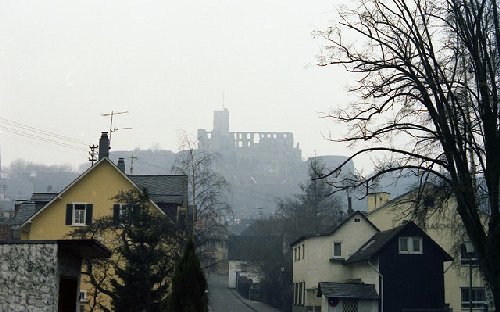
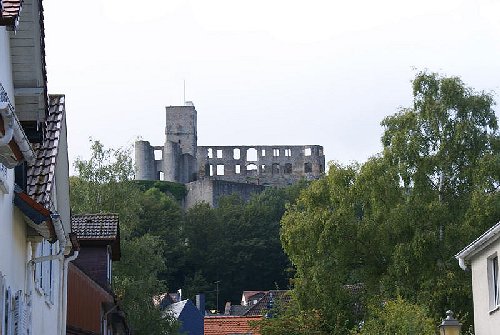

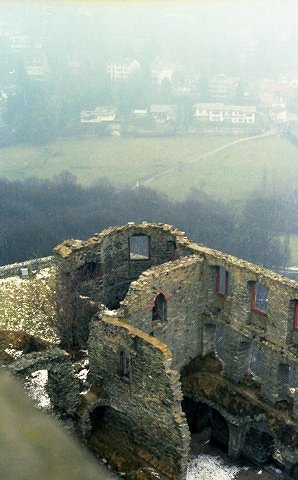




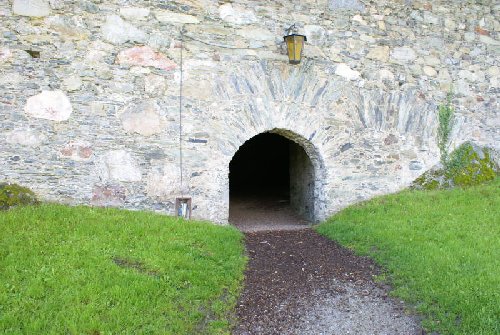
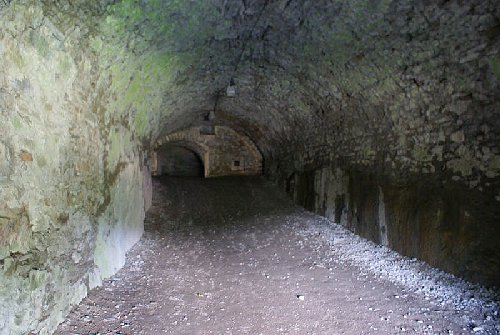
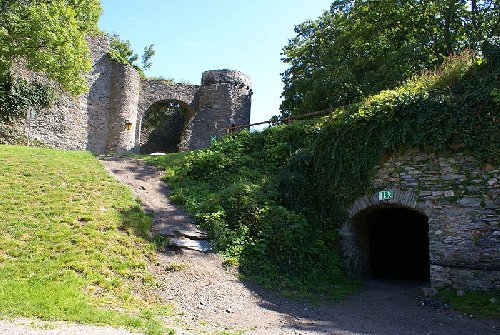
The photo at left shows the walkway as you near the castle. Finding the way to the castle is not too hard, but you do have to walk some back streets and look for a paved trail between some houses.
Left, part of the inner ward taken in 1977. Comparisons demonstrate that a lot of restoration work, especially cleaning of the wall surfaces, has been done.
Above left and right, too excellent "then and now" shots. The one on the left taken in 1977, the on the right in 2007. The grounds had received some maintenance as well.
Konigstein has some wonderful underground passageways and tunnels. These offer a winding pathway to reach the inner ward. Above, the view of the front facade with the entrance in the center. Flanking bastions (beyond) were there to protect the area from attack.
Left, the primary entrance, having received some serious restoration work.
Below left, a view inside the entrance passage. Beyond one can see a small defensive work designed to block the passage if it were breached. The length of the ceiling is not indicative of the length of the walls above ground, but does provide an idea how far the passages move into the castle grounds.
As you emerge (below) you enter the outer ward which is protected by flanking battlements. Any attacker, having come this far, would be subjected to a shower of missiles.
This photo shows how the castle dominated the town of Konigstein below. The picture was taken from the keep. The corner tower has been filled in recently with cement to strengthen it.
Konigstein was built by the counts Nurings in the 12th Century, probably as an imperial fortress under the Staufens. The castle passed to the counts of Munzenberg and then counts of Falkenstein from 1255-1418. The castle passed to other families over time until it was held by the Elector of Mainz for over 200 years. During the Thirty Years War from 1631-35 it was held by the Stolberg family on behalf of the Protestant cause. The Elector of Mainz expanded the fortifications after the war until French Revolutionary troops blew it up, along with many who were installing the charges, in 1796. The castle remained in the hands of the House of Nassau and later Prussia until it was given to the town of Konigstein in 1922.